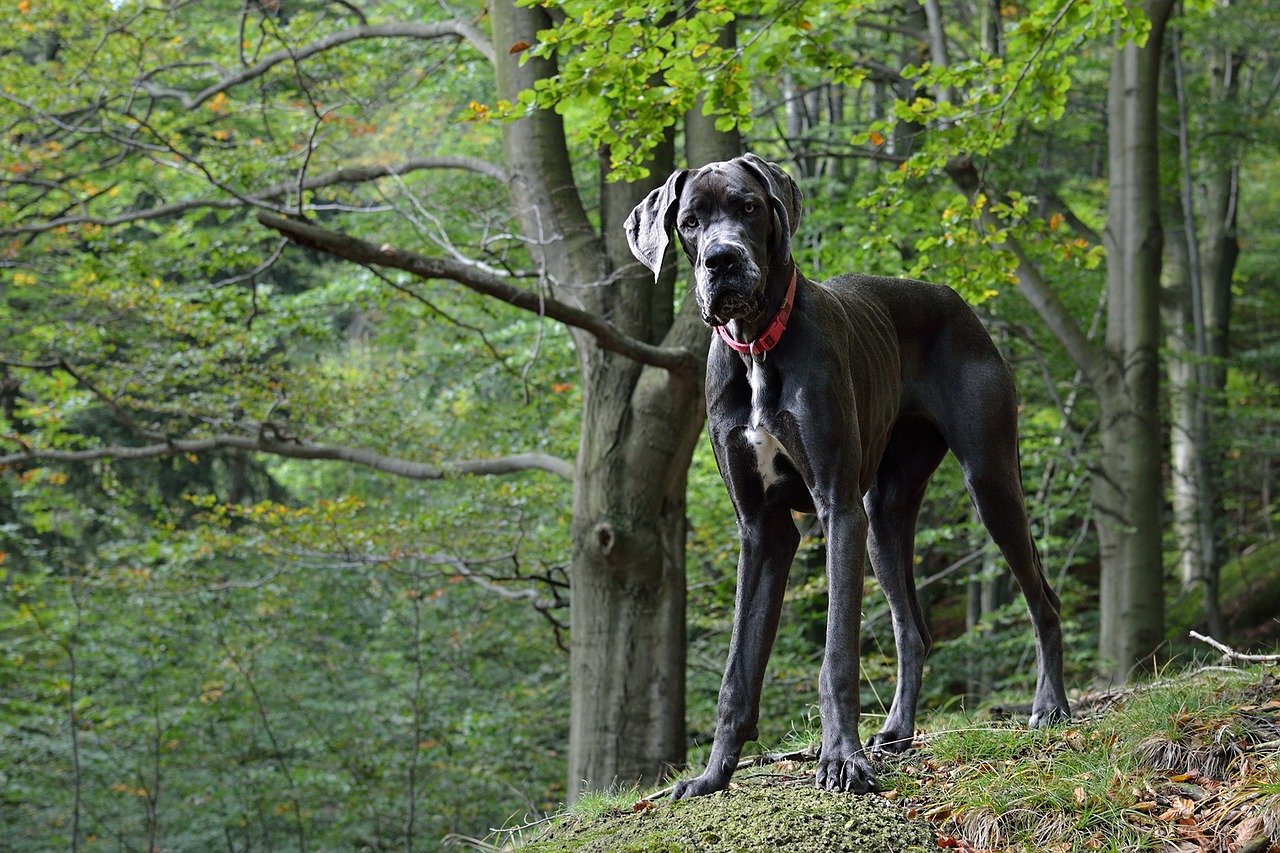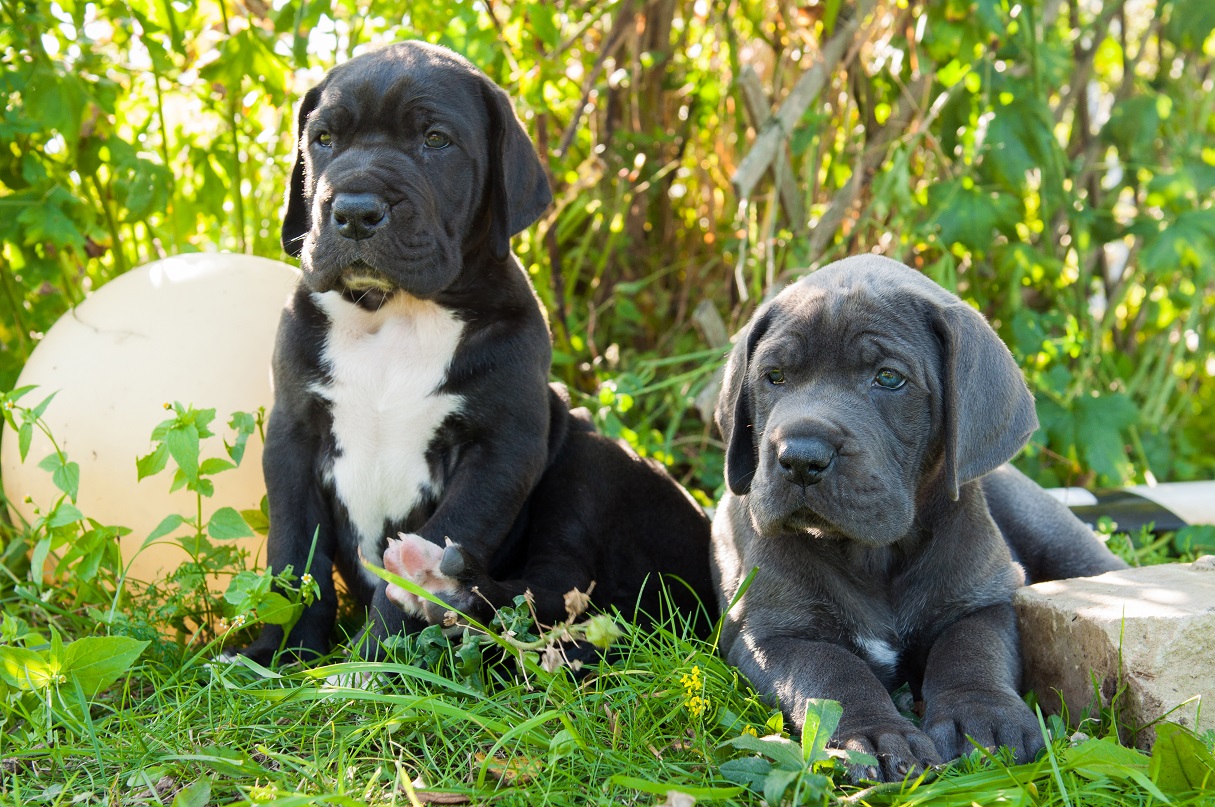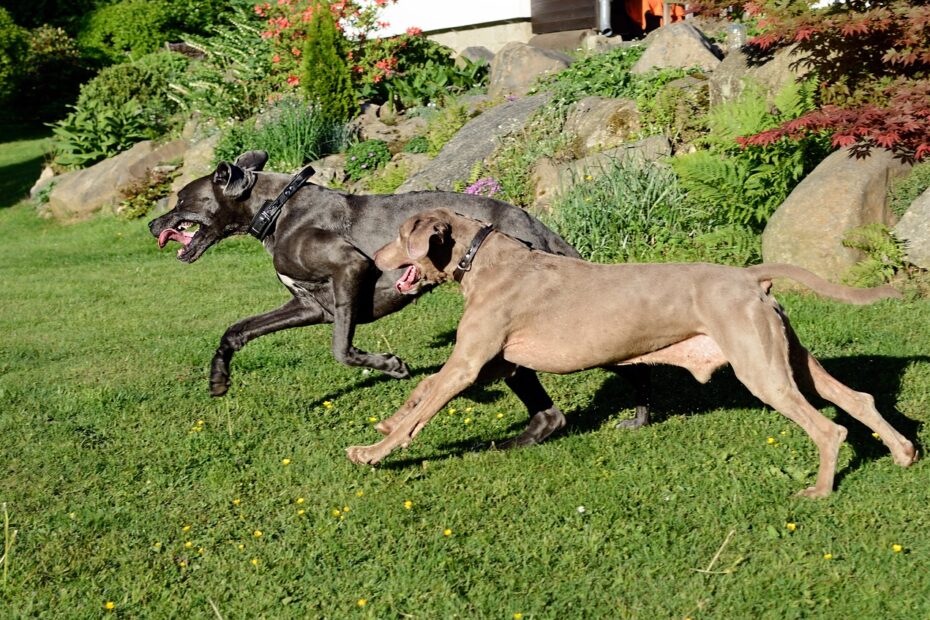If you’ve recently found yourself on the wrong side of an aggressive Great Dane, then you’ll already know how frustrating it can be.
Dealing with any dog with aggressive tendencies isn’t anybody’s idea of fun. But dealing with a dog with the size and power of a Great Dane will inevitably take the problem to a whole new level.
Worse still, it can often put a huge strain on the relationship you have with your dog which (in most circumstances) can escalate into more serious bouts of aggression if it isn’t dealt with in the right way.
I speak from personal experience when I say that nobody deserves to go through this frustration. So it’s important to try and steer your dog’s behavior in the right direction before the problem gets worse.
Fortunately, the problem isn’t impossible to manage. And there is actually a very simple way to teach your Great Dane to remain calm in ANY situation that usually triggers their aggression.
Better still, it has nothing to do with outdated, forceful training methods. And instead, involves just a few simple calming exercises that will make your dog completely relaxed and calm.
I can’t take all the credit for these exercises because the truth is, I actually picked them up from Dan Abdelnoor over at The Online Dog Trainer.
But over the years, these specific exercises have proven themselves time and time again when it comes to calming the aggressive nature in dogs.
Better still, they take just minutes a day to apply.
Anyway, if you want to see what these exercises are and how they can put an end to your dog’s life of aggression, I’d highly recommend grabbing a free copy of Dan’s book “My Everyday Dog Training Tools” where you can learn how to apply these exercises in more detail.
Here’s the link to take a look: Click Here To Grab Your FREE Copy Of My Everyday Dog Training Tools & Discover How To Finally Stop Your Great Dane’s Frustrating Aggressive Problem… Even If You’ve Tried & Failed Before!

Are Great Danes naturally aggressive?
Before we delve into the nitty-gritty, it’s important to point out that while some Great Dane breeds may be more aggressive than others, these dogs are not inherently aggressive.
In truth, this breed is known for its doting temperament – gentle and friendly.
Due to their loving and playful nature, Great Danes are especially known to get along well with children and other animals.
They are also recognized as amazing guard dogs due to their scary bark and inclination to protect their families.
Nevertheless, the fact that we all have to keep in mind is all breeds of dogs can exhibit aggressive behavior if they have been poorly bred or raised.
It is how dog training and socialization are done that determines the overall disposition of your Great Dane.
That’s why it’s important to ensure that you mold your Great Dane’s temperament to your liking as early as you can.
While Great Danes are not the easiest breed to train, they can learn even the most complicated commands as long as you put enough time and reinforcement into the training process.
Related Post: Why Is My Dog Being Aggressive All Of A Sudden?
Why is my Great Dane acting aggressive?
There are many factors that contribute to aggression in dogs. It is important to remember, however, that there are two sides to every story when it comes to your pet.
Aggression can result from something going on in your dog’s mind or in the environment around them.
If your Great Dane is showing signs of aggression towards you, another person, or an animal, it could be as a result of the following:
1. Lack of exercise
Though it’s an often overlooked aspect of training dogs, exercise is crucial to developing their temperament and mental health.
Just like humans need physical activity to stay fit both physically and mentally, so do dogs.
A lack of exercise can make your Great Dane feel less confident and can lead to frustration. On top of that, dogs are social creatures and need to spend time with their human pack members. When left alone at home for extended periods of time, they can get bored and also frustrated.
These emotions can sometimes lead to aggressive behavior such as biting or barking.
So make sure that you provide your pet with daily exercise to avoid such issues from popping up in the future.
2. Lack of socialization
While Great Danes are known to get along well with humans and other animals, that doesn’t mean they won’t ever feel the need to defend their territory from intruders.
You’d be surprised at how many Great Dane owners end up with aggressive dogs as a result of neglecting socialization training.
One major misconception that people have about dog training is that aggressive behavior can be attributed solely to genetics.
While it’s true that some breeds are more likely to behave aggressively than others, that doesn’t mean you won’t get an aggressive dog if you fail to train them properly.
As a responsible pet owner, it is your duty to teach your Great Dane not to behave aggressively towards people or other animals that come into contact with him for the first time.
You can enroll in dog training classes to help mold and shape their behavior while also providing socialization training.
If not trained properly, Great Danes can feel threatened when someone comes to visit. They will begin to bark or growl before attacking.
To prevent this, make sure you socialize your dog as early as possible so they know what feels safe and what does not.
3. Denied food
In nature, animals fight for resources like food and shelter to stay alive. Just like their wild counterparts, our pets also exhibit aggressive behavior when they are denied access to what they want.
For example, if you deny your Great Dane a meal to punish them, this might start showing signs of aggression.
This type of behavior is common among Great Danes because they are typically very food-driven and will act aggressively to get what they want.
You have to make sure that you never threaten your dog’s livelihood as it can cause major changes in his temperament. Never deprive or threaten to leave your Great Dane without food and water.
Doing so can trigger aggressive behavior towards you. In truth, it’s never a good idea to punish your dog.
4. Learned aggression
Another misconception about dog training is that all forms of aggression are attributed solely to genetics, which is rarely the case. Aggressive behaviors can also be learned from a variety of stimuli in the environment around them.
For example, if your Great Dane is placed in a stressful situation over and over again, they might come to the conclusion that acting aggressively is the best way to handle it.
If you have children at home, make sure they do not scare or hurt your dog on purpose. This could lead them to feel as though aggression is the only way to deal with the situation.
It is crucial that you monitor your children around your pet at all times and make sure they do not get scared or hurt them by accident.
Ignoring this could turn out to be a major mistake for you as a dog owner.
5. Possessive/territorial aggressiveness
While territorial aggression is fairly common among Great Danes, possessive aggression is not as well known.
This is why it’s equally important that you keep track of what triggers instances of possessive aggression.
Find a pattern in your dog’s behavior and monitor it over time. If there are certain areas or toys that your Great Dane is very possessive over, make sure you keep them out of sight.
Dogs are resource-guarding animals and will act aggressively if they feel that their territory or possessions have been invaded. They become more protective the more they bond with someone or something.
6. Fear aggression
Fear-based aggression in dogs can usually be traced back to their early days.
If a puppy has suffered abuse or trauma and was unable to protect themselves at the time. They might develop an aggressive response mechanism later on in life when put in similar situations again.
For example, if your dog had been bitten by another animal and was unable to defend themself, they might develop a fear of dogs and react aggressively if one is placed in front of him.
Fear-based aggression can be avoided by making sure that your Great Dane does not suffer any traumatic experiences. Remember that these animals were bred for protection purposes, and they are fearful at heart.
7. Pain/illness-based aggression
Great Danes are also no strangers to health problems and may react aggressively when they feel pain.
If your Dane is in pain, they might lash out at you or your loved ones in an attempt to protect themselves.
This could be a side effect from a chronic disease, such as arthritis, which can cause him to act aggressively out of fear and pain.

How to calm an aggressive Great Dane?
To address your Great Dane’s aggressiveness, there are a couple of actions that you can take. It can take a single action or a set of actions until your Great Dane becomes calm.
Firstly, you need to start by identifying the reasons for their aggressiveness. Once you do that, it will be easier to formulate a solution that will handle the situation effectively.
Here are some of the most common solutions for calming Great Danes:
1. Exercise your dog
As mentioned earlier, exercise is not only beneficial to physical health but also mental health. It is an excellent way to help your Great Dane burn off energy, which can go a long way in preventing his aggressiveness.
2. Socialize your Great Dane
Socialization will teach your dog how to establish trust with other people and dogs. It is recommended that you start socializing your Great Dane as early as possible to avoid social complications further down the line.
Keep in mind that your dog’s personality begins to develop during puppyhood.
Related Post: How To Socialize An Aggressive Dog – A Step By Step Guide

3. Seek help from a behaviorist or professional trainer
Great Danes can be a little physical and tough to handle. In such cases, you can benefit from hiring a professional trainer or behaviorist.
Trainers are trained to handle all sorts of breeds, including large, aggressive dogs, and will be able to recommend solutions that can fit your dog’s needs.
You might, however, want to use this as the last resort since it’s often an expensive solution. The advantage is that you are guaranteed that it’s a solution that will yield positive results.
4. Consult a vet
Finally, if your dog is aggressive towards humans or other animals, it’s important that you make an appointment with a vet.
If your Great Dane’s aggression is a result of pain or illness, it will be easier for your vet to solve the issue without taking the long route.
Final Thoughts
Generally, Grate Dane’s are some of the sweetest and most loving dogs you could own. They are playful, friendly, and incredibly loyal and will repay your love with nothing but affection.
So if you happen to find yourself on the receiving end of an aggressive Great Dane, just know that there is always something that you can do to change their behavior.
